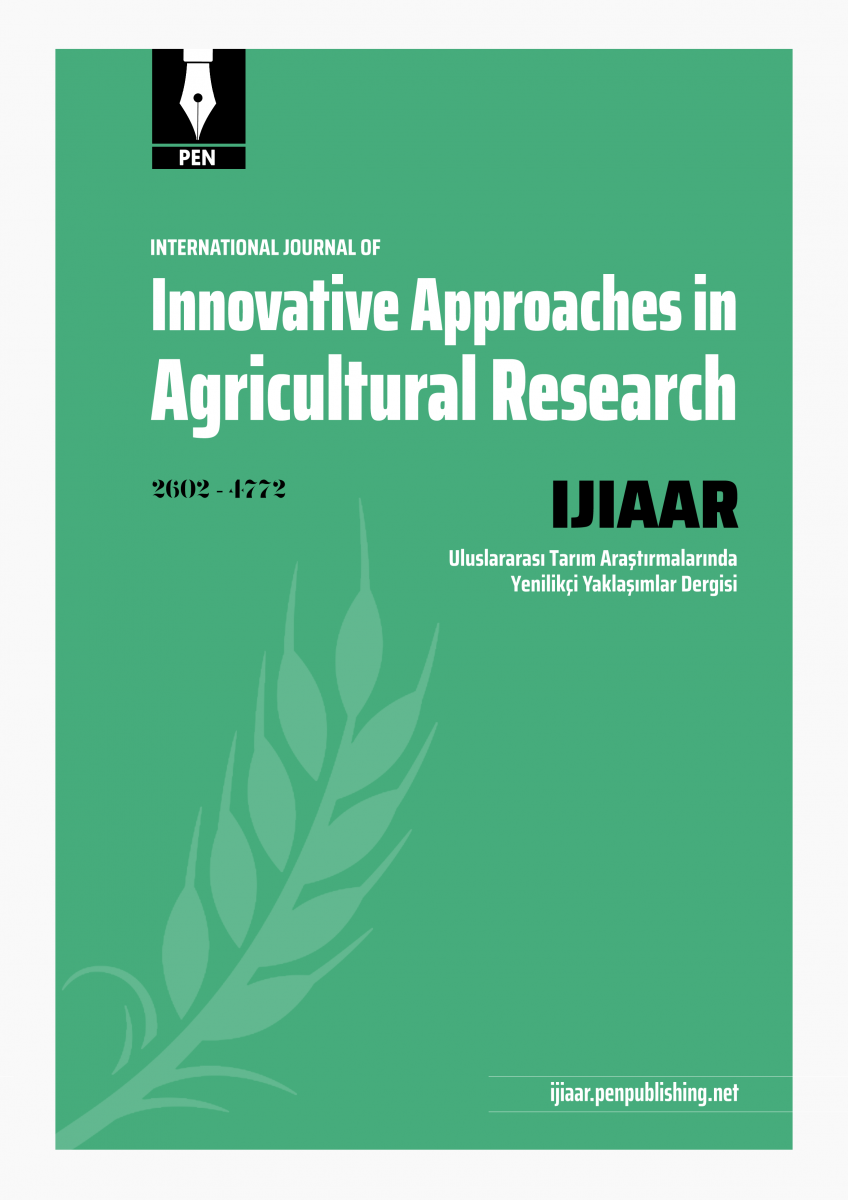Original article | Open Access
International Journal of Innovative Approaches in Agricultural Research 2023, Vol. 7(4) 434-441
Application of Mobile Fluorescence Spectroscopy as a Method for the Analysis of Representatives of Different Varieties of Radishes (Raphanus Sativus L.) During Storage under Uncontrolled Conditions
pp. 434 - 441 | DOI: https://doi.org/10.29329/ijiaar.2023.630.5
Published online: December 31, 2023 | Number of Views: 11 | Number of Download: 80
Abstract
The present study aims to establish the application of mobile fluorescence spectroscopy to determine varietal differences and water content during the storage of radishes under uncontrolled conditions. The experimental studies were carried out on the farm where the radishes were grown and stored. Fluorescence analysis was performed with a source with an emission wavelength of 285 nm using an author-developed mobile setup in a fiber-optic configuration generating fluorescence signals. Root crops from the Red Large, Espresso F1, French Breakfast, and Nacional 2 varieties are the object of this study. They were measured after harvesting after 3 and 6 months of storage. The correlation between the emission wavelengths of the samples of different varieties, as well as those of the same variety at different storage intervals, was established. This fact allows mobile fluorescence spectroscopy to be successfully applied as a rapid tool in radish breeding programs to establish the origin of unknown root crops in the presence of a rich library of spectra, as well as in the sorting of radishes in warehouses of food chains and producers. The experiment results can be used to optimize the time for the analysis of the varietal affiliation of different radish genotypes during storage under uncontrolled conditions. Fluorescence spectroscopy in a fiber-optic configuration will support the process of determining the affiliation of a particular radish variety to a given type (even for samples of unknown origin when it is necessary to qualify and sort in a short time).
Keywords: Radishes accessions, Fluorescence spectroscopy, Variety, Emission wavelength, Storage under uncontrolled conditions
| How to Cite this Article |
|---|
|
APA 6th edition Harvard Chicago 16th edition |
| References |
|---|
|

